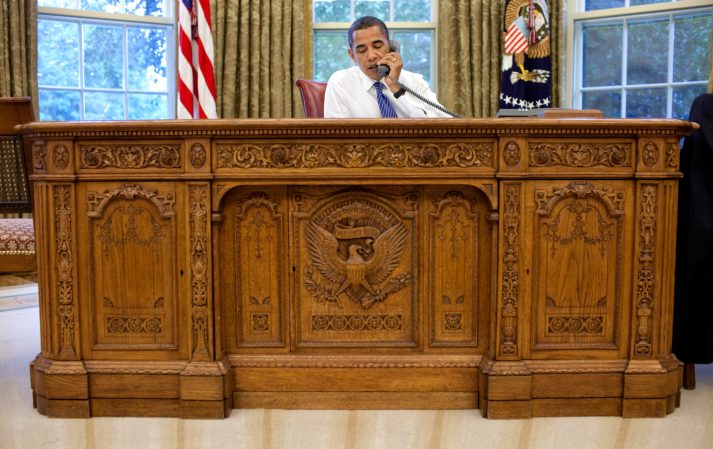
In the shadowy world of nuclear operations, seconds count. America’s nuclear warriors train daily to deliver awesome firepower in less time than it takes to microwave a slice of pizza.
The United States introduced the atomic bomb in 1945. The Soviet Union followed suit in 1948. An arms race ensued, with each side trying to top each other in destructive power. The nuclear triad, a triumvirate of submarines, bombers, and long-range missiles, was the pinnacle of that arms race.
The name of the game in nuclear strategy is survivability. And that’s what the triad was designed to achieve. Quiet submarines can hide beneath the waves. Bombers can escape to the skies in the event of an incoming attack. And hardened intercontinental ballistic missiles, ICBMs, are so numerous it would require a massive nuclear first-strike to neutralize all of them.
So what does it take to unleash nuclear hell? The massive power lies in the hands of one man, the President of the United States. It’s a responsibility that Harry Truman, who ordered the nuclear strikes on Hiroshima and Nagasaki, said was the most difficult of his Presidency.
In the entire United States military, nowhere is the chain of command thinner than the nuclear command and control network. In a normal military unit, there are two dozen degrees of separation between the National Command Authority and the warfighter. In the shadowy world of nuclear operations, there’s perhaps 2 or 3. When the decision is made, the order shoots like a bolt from the blue to bomber, missile, and submarine crews. When they launch, only the bomber crews have the option of recall.
President Kennedy lamented the responsibility. He thought it “insane that two men, sitting on opposite sides of the world, should be able to decide to bring an end to civilization.”
After the US-Soviet arms race hit its apogee during the Cuban missile crisis, Kennedy reportedly asked a few common sense, but insightful, questions about the nuclear chain of command. He wanted to know how he would order the Pentagon to launch a nuclear strike. And he was curious how nuclear crews would know the order came from the President.
The answer became one of the most visible signs of the President’s authority, the nuclear football. It’s a briefcase carried by a rotating cast of President’s military aides, officers from each service handpicked for their competency.
The football’s small size, power, and mystery have created something of a mythos around the non-descript briefcase. The term “finger on the button” has become synonymous with awesome responsibility. And the assumption is that the football has a big red button inside, one where the President hits when he wants to unleash Armageddon.
The reality isn’t nearly as sexy. The football is in some ways like many briefcases. It holds documents. The term football came from the original nuclear war plan, code-named Dropkick by Defense Secretary Robert McNamara. The thinking was that in order to execute a dropkick, you need a football.
The contents are highly classified. But former military aides have revealed a few key details about the football’s mysterious contents. It contains, most importantly, the authentication codes to America’s atomic arsenal. Those authenticators are the classified realm’s holiest of the holy, quite literally the keys to the nuclear kingdom. The briefcase also contains a menu of retaliatory options for the President. Contrary to popular belief, there’s more to nuclear war than a massive retaliatory blow. Whether to hit big or hit small is the President’s alone.
Along with the football, the President carries with him a small identification card with a series of codes on it. The codes verify his identity, and must accompany the football’s authenticators and war plans when ordering a nuclear strike.
Almost every President has a football fumble. During LBJ’s tenure, a military aide was stunned when he discovered six months’ worth of changes to nuclear procedures were not in the briefcase. When Reagan was shot, his special identification card was stuck in a small plastic hospital bag along with his other personal effects. George HW Bush once left his military aide (and associated football) behind after a tennis match. So did President Clinton. His military aide had to spring several blocks back to the White House, football in tow.
During the heyday of the Cold War, the Soviets also had a small satchel that accompanied the General Secretary. The Russian version had an electronic device that generated an unlock code. During the 1991 coup, conspirators seized both the Russian football and Gorbachev’s aide. The device was reportedly sabotaged by loyal officers during the coup, leaving the fading Soviet Union without access to their nuclear forces.
In America’s case, the invention of nuclear weapons created an anomaly in US history. The Presidency was devised to operate under a series of checks and balances. It was the Founding Father’s way of restraining executive power. Nuclear launch authority has no such check and no such restraint. The power is the President’s alone, and today remains perhaps the most awesome responsibility in history.










